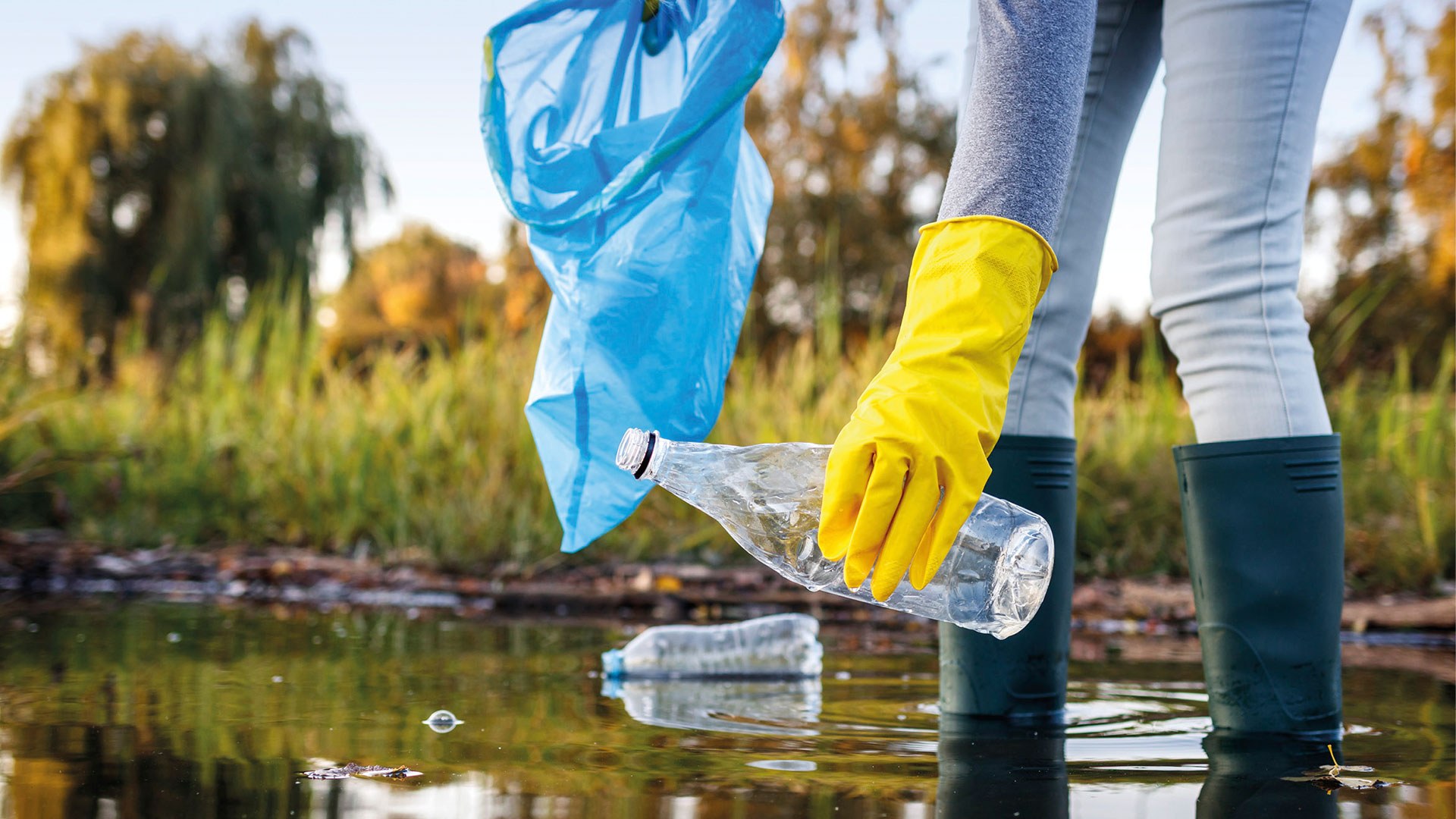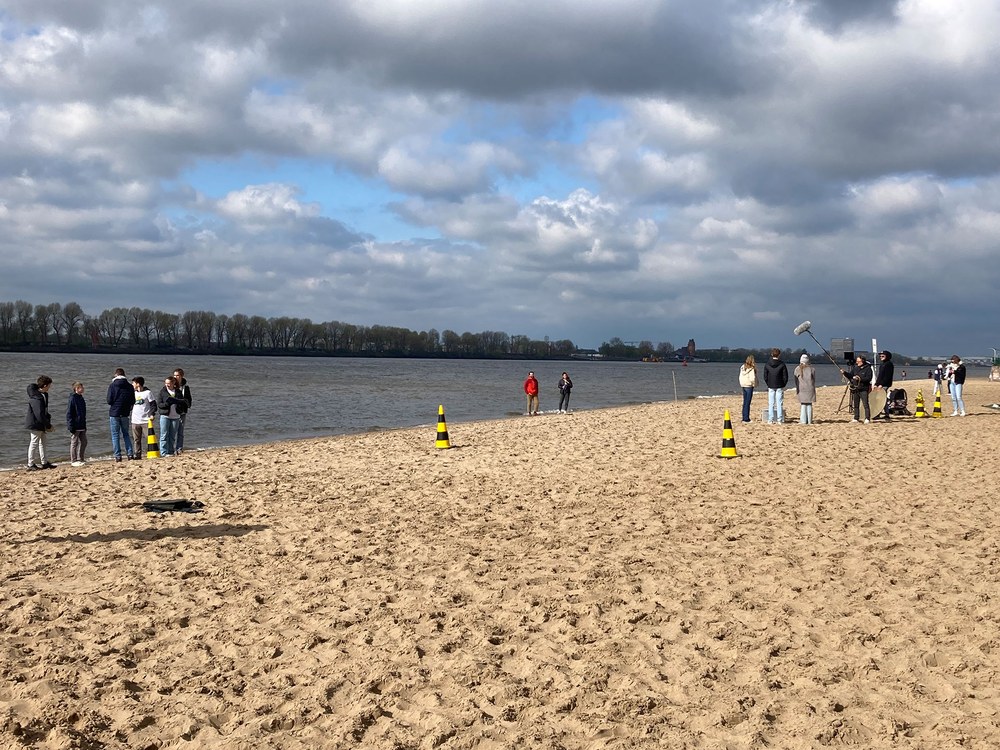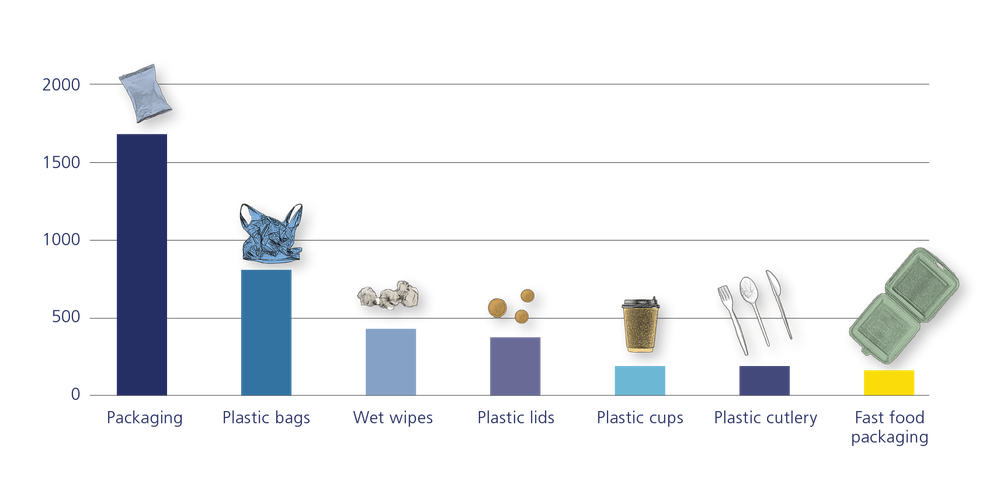A solution to pollution

iStock/Zbynek Pospisil
Torn plastic bags and disposable bottles on the banks of the Rhine, cigarette butts on the beach, a yoghurt pot floating in the sea – the amount of plastic waste in oceans, seas, rivers and streams is increasing worldwide. How much waste is there, what exactly is it made of and where does it all come from? These questions are being addressed by Plastic Pirates – a German initiative spread across Europe by the DLR Projektträger.
Although humans and all life on Earth depend on water, the pollution of our oceans, seas, rivers and streams continues to increase. In particular, the steadily rising level of micro- and macroplastics is altering our highly complex water systems. But we still know far too little about this plastic waste: Where does it come from and where does it go? What types of waste are found on and in our waters? Where is pollution of rivers and oceans particularly high? And how much microplastic is already in the water?
The Plastic Pirates clean up
The Plastic Pirates aim to get to the bottom of these questions. The initiative sees young people collect litter in and around waterways as part of a school class or youth group. The special aspect of this activity is that they do so according to scientific principles and document their results. The information they gather is made available on an online map, creating a vast treasure trove of data that benefits researchers all over the world.
"I was surprised by how much waste we found and how many people throw their litter away instead of putting it in the bin. To reduce the use of plastic, I want to choose plastic-free options such as buying honey in a glass jar instead of a plastic container at the supermarket. Another option is to buy fruit and vegetables at the market instead of wrapped in plastic. The best way is to avoid waste and reduce plastic. If more people take care to produce less waste, they can make a big difference to the environment."
Janne, 14 years old, Plastic Pirate from Albert-Schweitzer-Gymnasium in Hamburg



"Plastic waste is really everywhere in the environment, even as invisible microplastic in the water. And this litter harms all living creatures – both humans and animals. Thanks to the Plastic Pirates, I now know how researchers work. Everyone can make a contribution to scientific research and therefore to protecting the environment. What I particularly enjoyed is getting to learn more about the rivers in my neighbourhood."
Henry, 14 years old, Plastic Pirate from Albert-Schweitzer-Gymnasium in Hamburg
The DLR Projektträger spreads the Plastic Pirates across Europe
The 'Plastic Pirates – Go Europe!' project was initiated by the German Federal Ministry of Education and Research following the recommendation of the DLR Projektträger. The European Commission is now providing funding to enable more European countries to participate. The DLR Projektträger is responsible for the Europe-wide implementation of what was originally a German initiative on behalf of the Commission. After starting the Europe-wide roll-out in summer 2022, the Plastic Pirates are now active in 12 countries and contribute to the EU mission 'Restore our Oceans and Waters by 2030'.
Roughly 5000 young Plastic Pirates have now taken part in the initiative across nearly 300 coordinated sampling events, from Portugal to Bulgaria. This initiative is now a flagship citizen science project of the European Commission and shows great potential to be extended further into the world. "The biggest challenge at the beginning was to get more European countries interested in the project within just a few months and – in line with the European Year of Youth 2022 – to set up sampling campaigns across Europe," explains Philip Ackermann, coordinator of the initiative at the DLR Projektträger. "At the DLR Projektträger, we are proud that by spreading the Plastic Pirates initiative to Europe, we are helping to inspire Europe's youth for science, while at the same time collecting data on the extent and origin of pollution in our rivers and seas."

Macroplastics and Microplastics
Macroplastics: Macroplastics are pieces of plastic larger than five millimetres. Examples include fishing nets, water bottle caps, lighters and flip-flops. Floating macroplastics are a danger to marine life because these can easily be mistaken for food and ingested. Turtles, seals, whales and other animals can also become entangled and injured in broken and abandoned nets, known as ghost nets.
Microplastics: Microplastics are pieces of plastic smaller than five millimetres. They are formed when macroplastics in the ocean break down into smaller and smaller pieces due to solar radiation, salinity and wave action, for example. Many microplastic particles are also created by the abrasion of car tyres on roads. These particles then enter the ocean through sewage and rivers. Microplastics are also mistaken for food by animals and end up in their bodies: when these marine animals are eaten, they end up in the human body.
Source: Federal Ministry of Education and Research
An article by Stefanie Huland and Nina Wünsche from the DLRmagazine 173
